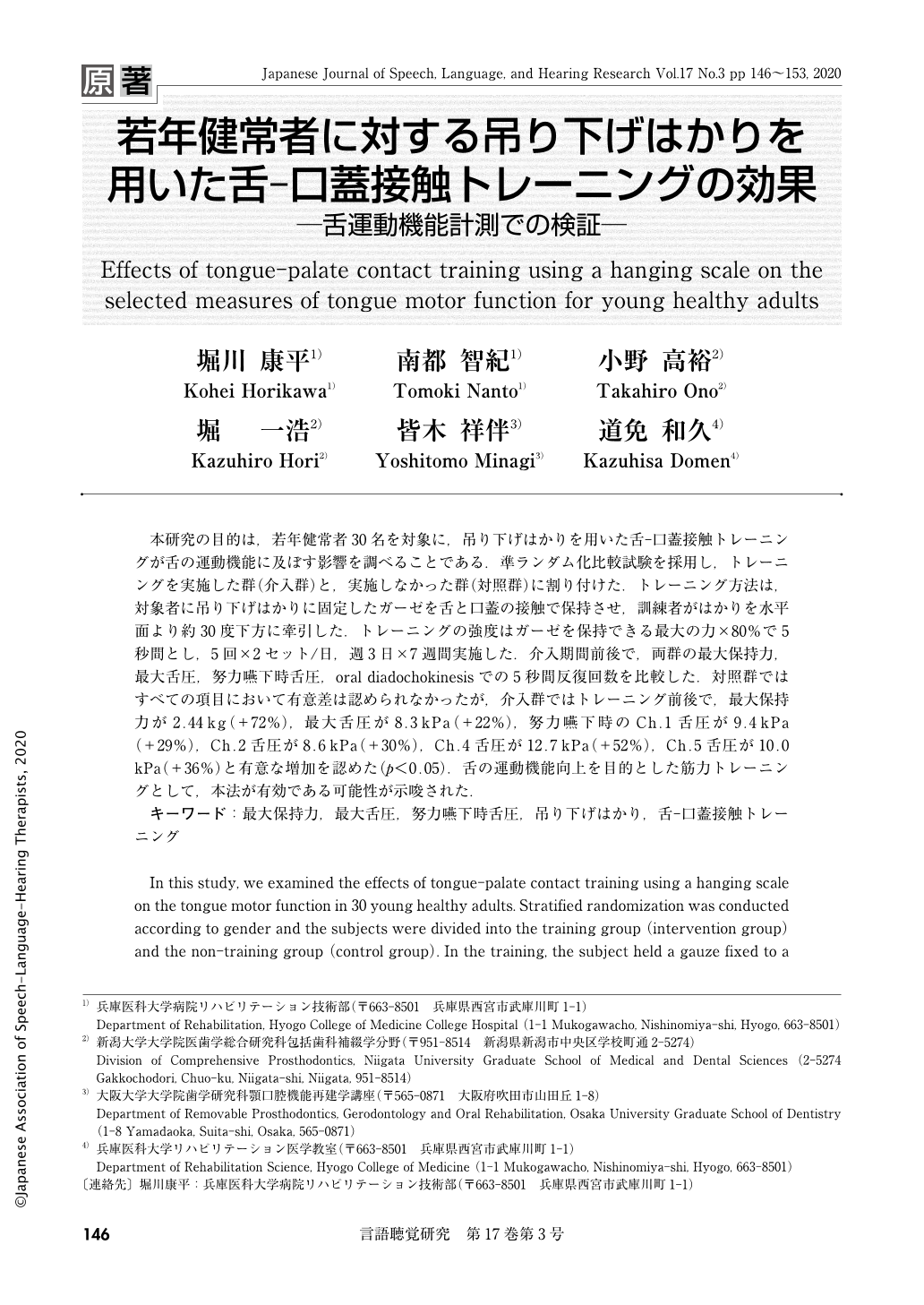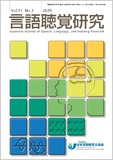Japanese
English
- 有料閲覧
- Abstract 文献概要
- 1ページ目 Look Inside
- 参考文献 Reference
本研究の目的は,若年健常者30名を対象に,吊り下げはかりを用いた舌-口蓋接触トレーニングが舌の運動機能に及ぼす影響を調べることである.準ランダム化比較試験を採用し,トレーニングを実施した群(介入群)と,実施しなかった群(対照群)に割り付けた.トレーニング方法は,対象者に吊り下げはかりに固定したガーゼを舌と口蓋の接触で保持させ,訓練者がはかりを水平面より約30度下方に牽引した.トレーニングの強度はガーゼを保持できる最大の力×80%で5秒間とし,5回×2セット/日,週3日×7週間実施した.介入期間前後で,両群の最大保持力,最大舌圧,努力嚥下時舌圧,oral diadochokinesisでの5秒間反復回数を比較した.対照群ではすべての項目において有意差は認められなかったが,介入群ではトレーニング前後で,最大保持力が2.44kg(+72%),最大舌圧が8.3kPa(+22%),努力嚥下時のCh.1舌圧が9.4kPa(+29%),Ch.2舌圧が8.6kPa(+30%),Ch.4舌圧が12.7kPa(+52%),Ch.5舌圧が10.0kPa(+36%)と有意な増加を認めた(p<0.05).舌の運動機能向上を目的とした筋力トレーニングとして,本法が有効である可能性が示唆された.
In this study, we examined the effects of tongue-palate contact training using a hanging scale on the tongue motor function in 30 young healthy adults. Stratified randomization was conducted according to gender and the subjects were divided into the training group (intervention group) and the non-training group (control group). In the training, the subject held a gauze fixed to a hanging scale by the contact force of the tongue and palate, and the trainer pulled the scale in a direction of 30 degrees downward from the horizontal plane. The training intensity was set at 80% of the maximal holding power for 5 seconds. Training was performed 5 times per set, 2 sets per day, and 3 days per week for 7 weeks. The maximal holding power, the maximal tongue pressure, the tongue pressure during effortful swallowing, and the frequency of syllable repetitions for five seconds were compared before and after the intervention period. In the control group, there was no significant change in any of the parameters, whereas in the intervention group, the gains found after training were as follows:2.44kg (+72%) for maximal holding power, 8.3kPa (+22%) for maximal tongue pressure, and for tongue pressure during effortful swallowing 9.4kPa (+29%) in Ch.1, 8.6kPa (+30%) in Ch.2, 12.7kPa (+52%) in Ch.4 and 10.0kPa (+36%) in Ch.5 (p<0.05). The results of the present study suggest that this training might be an effective method of strength training for the tongue motor function.

Copyright © 2020, Japanese Association of Speech-Language-Hearing Therapists. All rights reserved.


